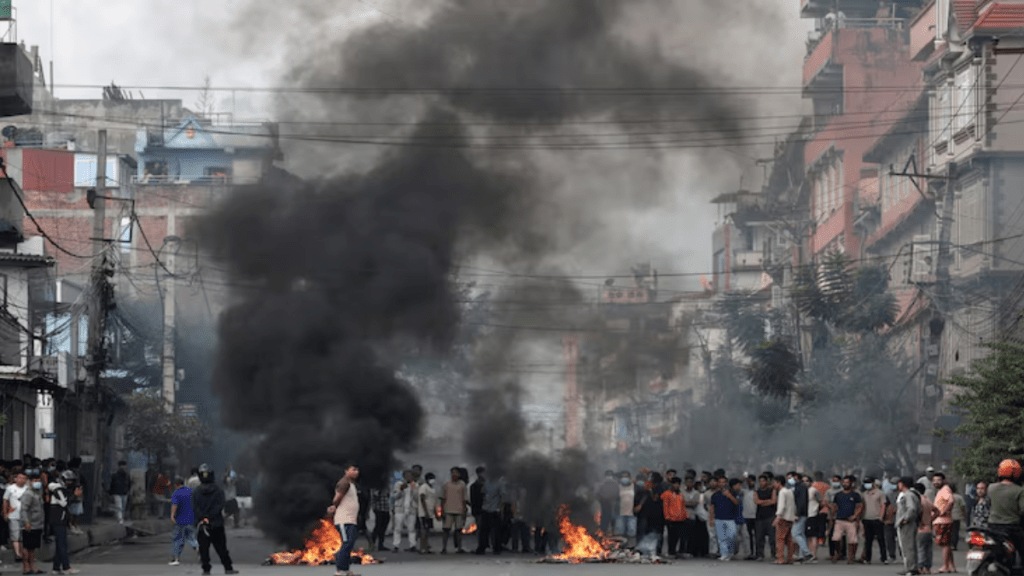There is a sense of déjà vu regarding the massive anti-government student protests in Nepal that toppled the government headed by Prime Minister KP Sharma Oli. Last August, weeks of student protests in Bangladesh forced PM Sheikh Hasina to flee to India. Three years ago, escalating nationwide protests in Sri Lanka led to former PM Mahinda Rajapaksa seeking safety in a naval base. Of course, there are differences between these groundswells of opposition that forced regime change in the neighbourhood. In Nepal, the ban on social media was the proximate trigger for the protest by Gen Z but the unrest was simmering for some time. In Bangladesh, the students agitated against the quota system for government jobs. In Sri Lanka, the unrest was against crippling shortages of essentials and double-digit inflation.
Youth Anger and Migration Pressures
Tensions have been mounting in Nepal because of the frustrations of the youth over the lack of jobs—with unemployment among those who are 15-24 years of age as high as 22.7%—and widespread corruption of the political class. Before the social media ban, Gen Z users were posting about “Nepo kids”—younger members of prominent political families—and their lavish lifestyles in a poor nation. The protests should be seen in the broader context of political instability in this Himalayan nation. There have been 14 governments since Nepal became a democracy in 2008. Frustrations have been mounting as virtually every senior political leader—including Oli and five former PMs—faces corruption charges.
The youth feel there is no future in this corrupt and stagnant system. “If the protests are the loud revolt, migration is the quiet rebellion,” argued professor Amitabh Mattoo of the Jawaharlal Nehru University in a newspaper column. More than 400,000 people leave the country every year—the population of Nepal is 30 million—for employment in West Asia, Malaysia, and Hong Kong. They also head to Europe and the US where they form the fastest-growing community of Asian Americans. The remittances they send back home is the mainstay of Nepal’s economy, amounting to 33% of GDP. Unlike in Sri Lanka, there is no economic crisis that has created such a ferment as growth is expected to be 4.5% in fiscal 2025 (mid-July to mid-July) and 5.4 % in FY27, according to the World Bank. Nepal’s growth must translate into jobs if this youth demographic is not to be hollowed out.
What Comes Next for Nepal?
The big question is, what comes next? The Nepal’s army is now in control on the streets amidst indications that one of the student outfits, Next Gen Nepal, is ready for dialogue but the parliament would have to be dissolved first. The first priority was to install an interim government that is acceptable to Gen Z. The army deserves praise for persuading former Chief Justice of Nepal Sushila Karki—after several rounds of talks on Wednesday—to accept a request from protesters to be the interim head. As the largest neighbour, India is keenly watching these developments in Nepal and has expressed hope that restraint would be exercised and all issues addressed “through peaceful means and dialogue”. Although there is relief that former PM Oli is no more in the picture due to his anti-India stance, India must engage with all the stakeholders, especially the protesting student leaders. Dealing with regime change in the neighbourhood entails deploying more resources and diplomatic personnel to be abreast of fast-breaking developments. The sudden meltdown in Bangladesh took India completely by surprise. This should never happen again.

